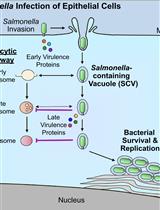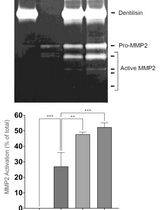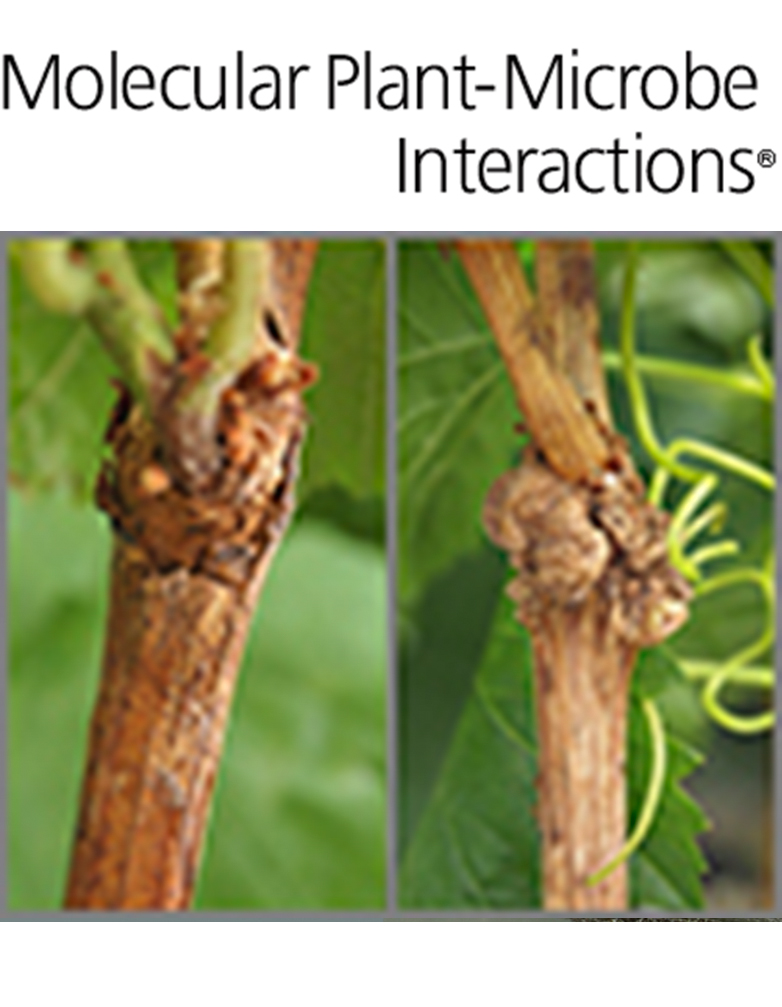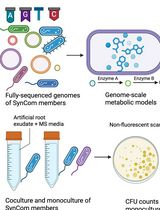- EN - English
- CN - 中文
Pseudomonas syringae Flood-inoculation Method in Arabidopsis
拟南芥的丁香假单胞菌浸没接种法
发布: 2017年01月20日第7卷第2期 DOI: 10.21769/BioProtoc.2106 浏览次数: 13474
评审: Zhaohui LiuBin TianAnonymous reviewer(s)

相关实验方案

细菌病原体介导的宿主向溶酶体运输的抑制:基于荧光显微镜的DQ-Red BSA分析
Mădălina Mocăniță [...] Vanessa M. D'Costa
2024年03月05日 2849 阅读

通过制备连续聚丙烯酰胺凝胶电泳和凝胶酶谱分析法纯化来自梭状龋齿螺旋体的天然Dentilisin复合物及其功能分析
Pachiyappan Kamarajan [...] Yvonne L. Kapila
2024年04月05日 2007 阅读
Abstract
Pseudomonas syringae pv. tomato strain DC3000 (Pto DC3000), which causes bacterial speck disease of tomato, has been used as a model pathogen because of its pathogenicity on Arabidopsis thaliana. Here, we demonstrate a rapid and reliable flood-inoculation method based on young Arabidopsis seedlings grown on one-half strength MS medium. We also describe a method to evaluate the bacterial growth in Arabidopsis.
Keywords: Pseudomonas syringae (丁香假单胞菌)Background
The A. thaliana-Pto DC3000 model pathosystem is widely used to investigate the molecular mechanisms of microbial pathogenesis and plant innate immunity (Ishiga et al., 2012 and 2016; Ishiga and Ichinose, 2016). Although several inoculation methods have been developed to study the interactions in this model system, none of the methods reported to date are similar to those occurring in nature.
Materials and Reagents
- 1.5 ml microcentrifuge tubes (Ina-optika, catalog number: LT-0150 )
- 1 ml pipette tips (Mettler-Toledo, catalog number: 768/8 RT-1000 )
- Inoculating loops (VWR, catalog number: 12000-812 )
- 3M Micropore 2.5 cm surgical tape (3M, catalog number: 1530-1 )
- Plastic Petri plates (100 x 20 mm) (TrueLine, catalog number: TR4002 )
- Plastic Petri plates (100 x 15 mm) (VWR, catalog number: 10053-704 )
- Conical tubes (50 ml) (LabPlanet, catalog number: 3181-345-008 )
- Plant material: Arabidopsis thaliana ecotype Columbia (Col-0) was used as a wild-type plant
- Bacterial strains: P. syringae pv. tomato DC3000 (Pto DC3000) was used as pathogenic strain on A. thaliana-Pto DC3000 was kindly provided by Dr. Fumiaki Katagiri at University of Minnesota
- Ethanol (70%) (Wako Pure Chemical Industries, catalog number: 059-07895 )
- Sodium hypochlorite (Wako Pure Chemical Industries, catalog number: 197-02206 )
- Tween 20 (Wako Pure Chemical Industries, catalog number: 327-32475 )
- Sterile distilled water
- Rifampicin (50 mg/ml) (Wako Pure Chemical Industries, catalog number: 185-01003 )
- Silwet L-77 (BMS, catalog number: BMS-SL7755 )
- 5% H2O2 (Wako Pure Chemical Industries, catalog number: 081-04215 )
- Mannitol (Wako Pure Chemical Industries, catalog number: 133-00845 )
- L-glutamic acid (Wako Pure Chemical Industries, catalog number: 074-00505 )
- KH2PO4 (Wako Pure Chemical Industries, catalog number: 169-04245 )
- NaCl (Wako Pure Chemical Industries, catalog number: 191-01665 )
- MgSO4·7H2O (Wako Pure Chemical Industries, catalog number: 131-00405 )
- Agar (Wako Pure Chemical Industries, catalog number: 010-15815 )
- NaOH (Wako Pure Chemical Industries, catalog number: 192-15985 )
- Murashige and Skoog basal medium (Sigma-Aldrich, catalog number: M0404 )
- Sucrose (Wako Pure Chemical Industries, catalog number: 196-00015 )
- PhytagelTM (Sigma-Aldrich, catalog number: P8169 )
- KOH (Wako Pure Chemical Industries, catalog number: 165-21825 )
- Media
- Mannitol-glutamate (MG) medium (see Recipes)
- One-half strength Murashige and Skoog (MS) medium (see Recipes)
Equipment
- High-speed centrifuge (TOMY, model: MX305 )
- Pipette (Mettler-Toledo, model: Pipet-Lite XLS+ )
- Labo shaker (TAITEC, model: NR-2 )
- Labo incubator (AS ONE, model: ICV-300P )
- Clean work station (Hitachi Industrial Equipment Systems, model: CCV-1306E )
- Spectrophotometer (JASCO, model: V-630 )
- Plant growth chamber (NKsystem, model: LPH-411SP )
- Digital scale (AS ONE, model: IB-300 )
- Mortars and pestles (AS ONE, catalog number: 6-549-02 , φ90 mm)
Procedure
文章信息
版权信息
© 2017 The Authors; exclusive licensee Bio-protocol LLC.
如何引用
Ishiga, Y., Ishiga, T., Ichinose, Y. and Mysore, K. S. (2017). Pseudomonas syringae Flood-inoculation Method in Arabidopsis. Bio-protocol 7(2): e2106. DOI: 10.21769/BioProtoc.2106.
分类
植物科学 > 植物免疫 > 病害生物测定
微生物学 > 微生物-宿主相互作用 > 细菌
您对这篇实验方法有问题吗?
在此处发布您的问题,我们将邀请本文作者来回答。同时,我们会将您的问题发布到Bio-protocol Exchange,以便寻求社区成员的帮助。
Share
Bluesky
X
Copy link













